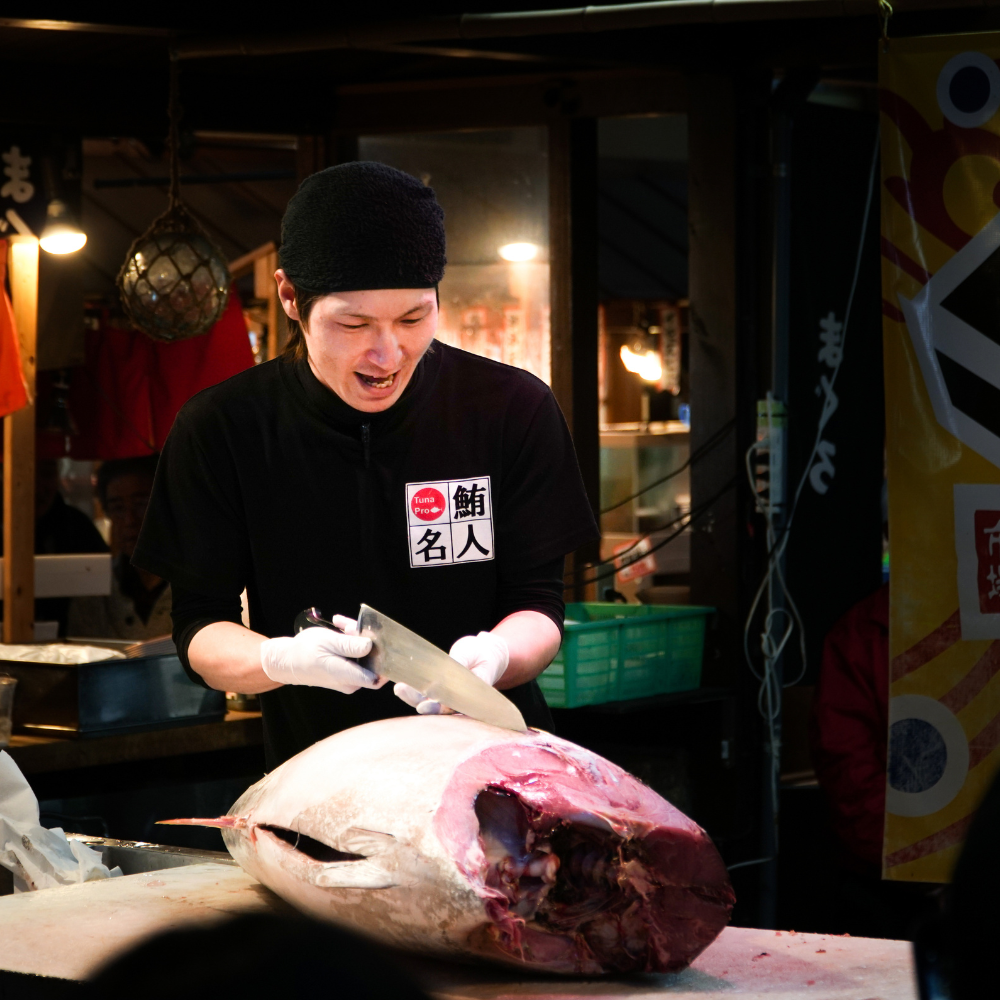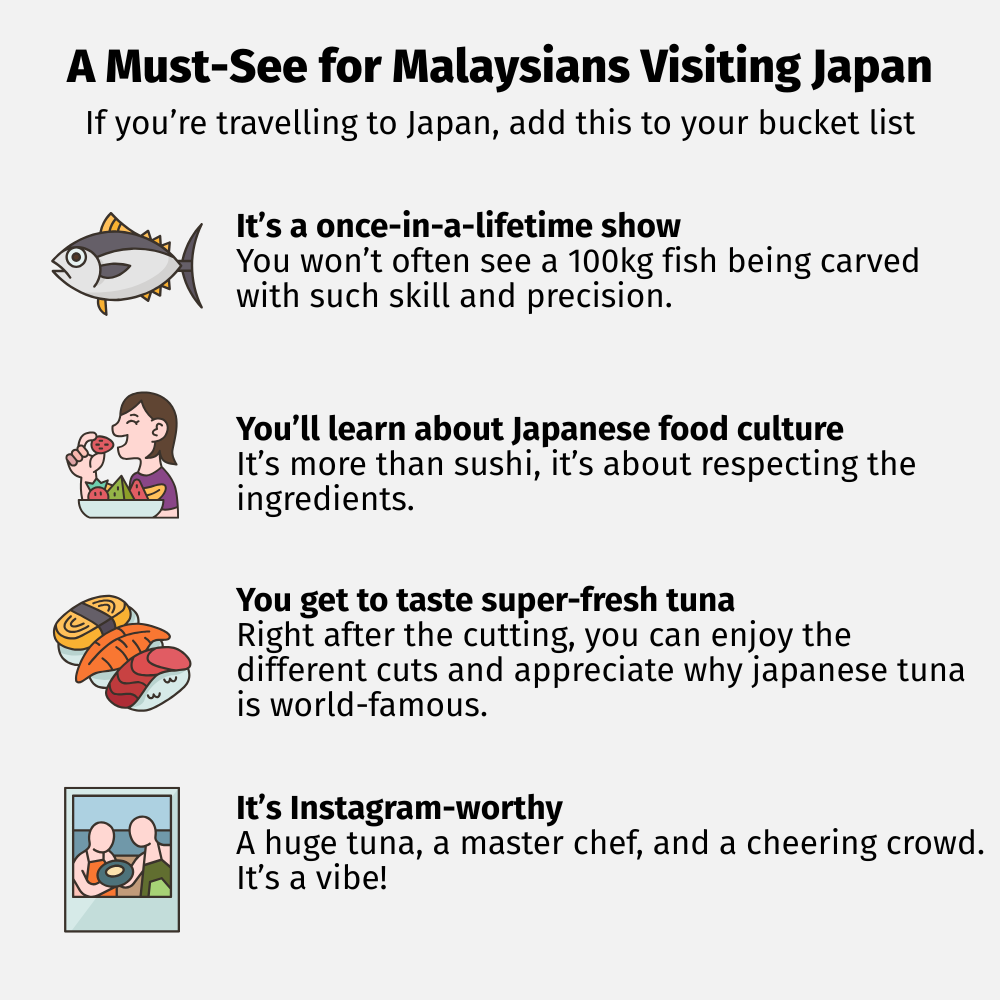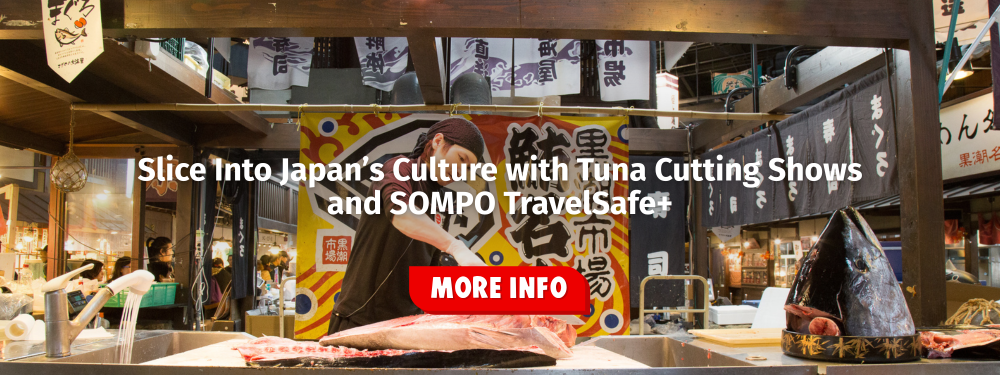Why Tuna Cutting is a Cultural Spectacle in Japan and Why Malaysians Shouldn’t Miss It

If you think sushi is just something you grab at the conveyor belt restaurant, wait until you witness a live tuna cutting show in Japan. It’s not just about chopping up a fish, it’s an art form, a performance, and a cultural celebration rolled into one.
The Art of Tuna Cutting
In Japan, tuna, especially the prized bluefin tuna is more than seafood. It’s a symbol of quality, freshness, and craftsmanship. The cutting process is called maguro kaitai (まぐろ解体), and it’s usually performed by skilled fishmongers or sushi chefs.
These masters use a series of traditional knives, some as long as a sword, to break down a whole tuna that can weigh 100 kg or more. Every slice must be precise because different parts of the tuna have different textures and flavours from the lean akami, to the medium-fatty chutoro, and the luxurious otoro that melts in your mouth. It’s like watching a master carver at work – quiet, focused, and respectful of the fish.

Why its a Celebration
In Japan, tuna cutting events are often held at big markets like Toyosu Market in Tokyo (which replaced the famous Tsukiji Market) or at local seafood festivals. When a large tuna is cut, it’s an occasion. People gather, cameras come out, and the freshest pieces are served on the spot.
For the Japanese, it’s a way of honouring the sea, the fishermen, and the chefs’ skills. It reflects omotenashi. The Japanese spirit of hospitality and respect because the goal is to serve the best to the community.


A tuna cutting show isn’t just about food. It’s a front-row seat to Japanese tradition, skill, and passion. For Malaysians who love food (and let’s face it, we all do), this is one cultural experience you don’t want to miss the next time you’re in Japan.

